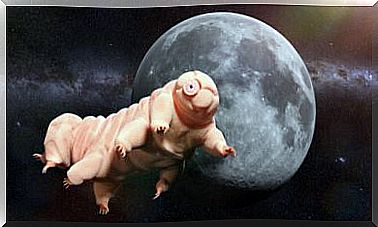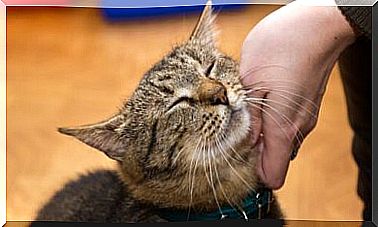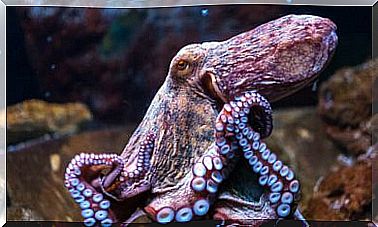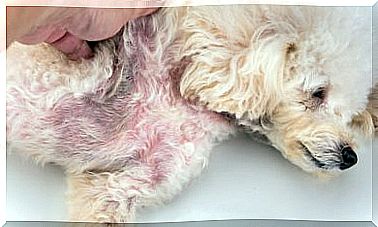Cataracts In Cats: Symptoms And Treatments
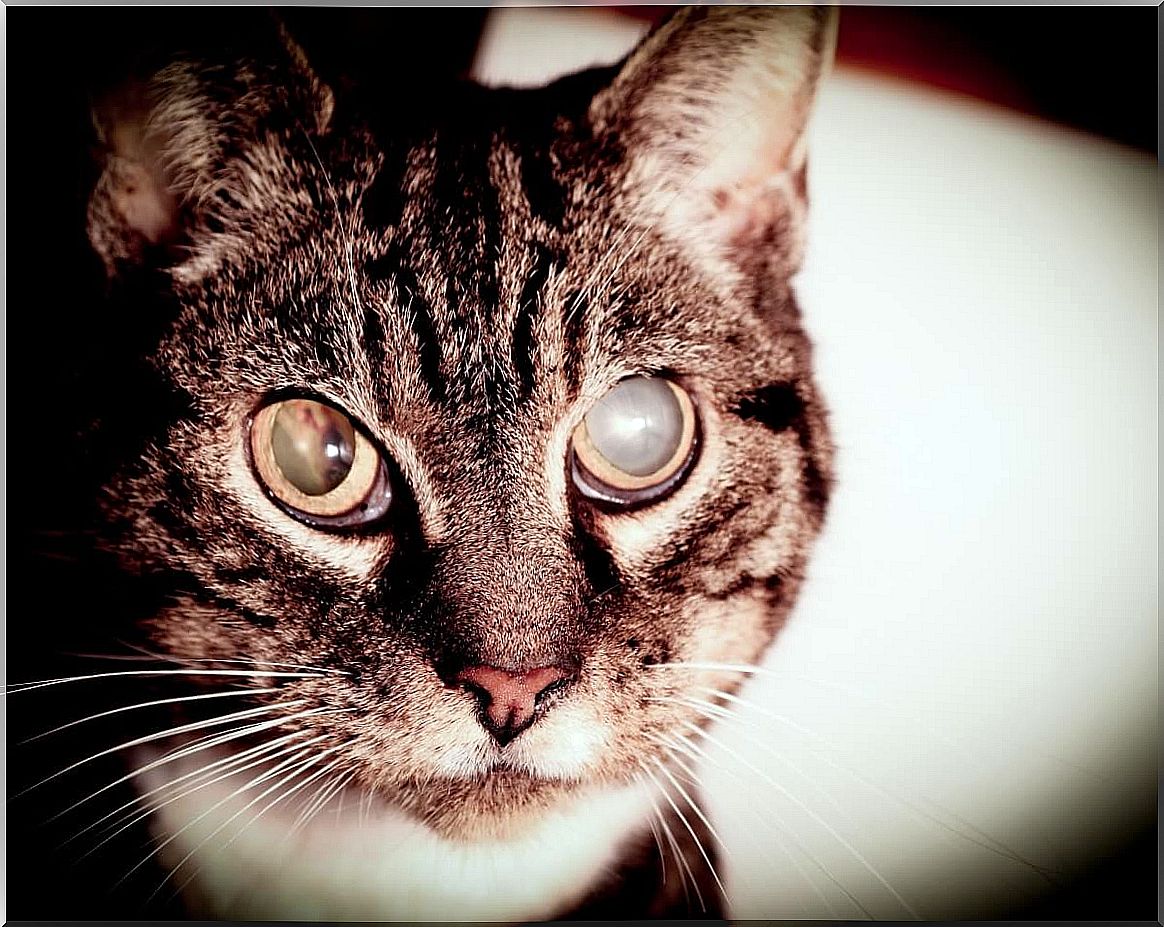
The sense of sight is essential for domestic felines, since in nature, most species of the Felidae family are nocturnal hunters. As you can imagine, the loss of vision in one of these pets reports a much greater degree of disability than in other living beings with the same condition. Therefore, tackling cataracts in cats before blindness appears is vital.
According to studies that we will see later, up to 13% of domestic cats develop cataracts during their life, especially in old age. If you want to know everything about this common and disabling clinical entity, keep reading.
What are cataracts in cats?
The term ‘cataracts’ refers to a total or partial opacity of the lens, a structure located behind the iris and in front of the vitreous humor of the eyeball. The lens is composed of a network of protein fibers, which give it a refractive index higher than that of attached structures. Thanks to this, this formation focuses the light on the retina and allows the construction of images.
Cataracts are generally conceived to be a by-product of aging. Over time, the proteins in the lens become denatured and lose their functionality, which slowly but inexorably impairs the animal’s ability to see. However, there are many other conditions that can lead to this entity. Among them, we highlight the following:
- Inflammation in the ocular environment: Also known as uveitis , this clinical picture is the main cause of cataracts in cats. Inflammatory reactions cause irreparable damage to the ocular environment, which also affects the lens. Trauma or infection are the causative agents of uveitis.
- Hereditary diseases: purebred cats are usually more prone to these conditions, as there are genes that cause blindness, as indicated by studies. The more consanguineous individuals are crossed, the more likely it is that the offspring will have problems.
- Poor diet and metabolic diseases: both concepts are linked. Diabetic retinopathy – which causes blindness – is linked to obesity and a lack of compounds to keep the eye healthy to malnutrition. Systemic problems, derived from diet or not, can manifest themselves in the ocular environment.
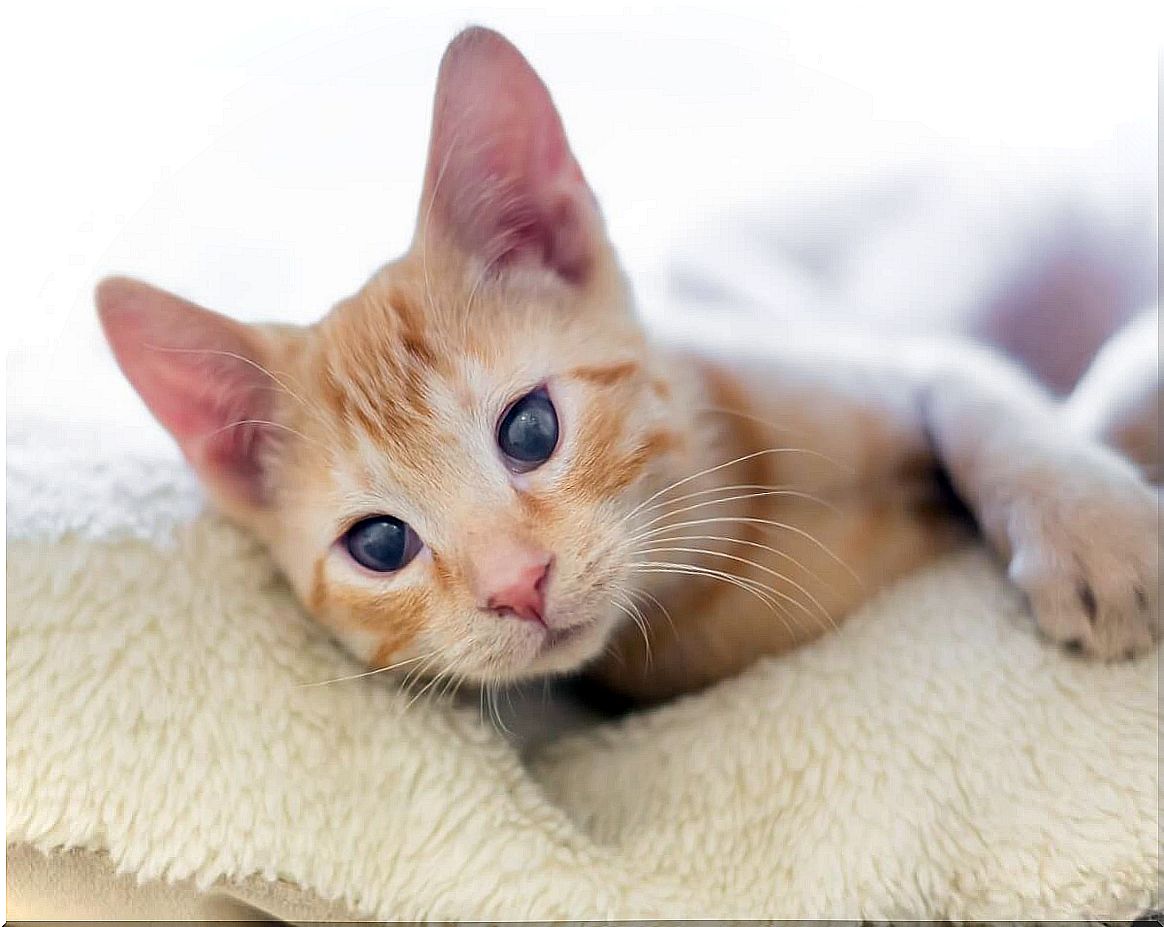
Symptoms of cataracts in cats
The clinical signs of cataracts depend entirely on the severity of the blindness, as indicated by the VCA Hospitals portal . If they are detected in a routine analysis and the damage to the lens is minimal, the cat will present normal behavior at the time of diagnosis.
However, if the stage is more advanced, it is easy to observe a kind of whitish ‘film’ in the eye environment of the cat. In addition, the cat will be reluctant to practice activities that he once adored, such as climbing walls or jumping between elevated areas. In general, the pet becomes much clumsier and has trouble positioning itself in the environment.
Diagnosis of the disease
The diagnosis of cataracts in cats is very similar to that in humans. With the help of an ophthalmoscope, the professional will observe the internal and external state of the pet’s eyeballs and will determine the possible causal agent of its blindness, whether it is total or partial.
Furthermore, in almost all cats the condition is derived from another secondary clinical entity. As studies indicate, uveitis is the cause of more than 30% of cases, so it is necessary to identify possible eye infections or poorly healed wounds. Less than 11% of the pictures are explained by age, so ascribing cataracts to old age is the last option.
Treatment of cataracts in cats
The ideal treatment for cataracts is surgery. In it, the damaged opaque lens is removed and replaced with an artificial one, which restores the focusing power of the eye apparatus. In any case, if the inflammation of the cat’s eye is too much, the operation is ruled out and it is chosen only to treat the underlying disease.
In felids in which uveitis is the main causative agent, corticosteroid drug eye drops are used, which help reduce inflammation and continue to damage the lens. Without surgery, the condition cannot be reversed, but it can be prevented from progressing to total blindness.

A condition that should always be treated
If a cat with cataracts is not treated, it will end up losing vision, either totally or partially. Also, if the cause is an infection or a systemic problem, the cat may end up dying from complications of the disease. For this reason, it is never conceivable to let the condition develop without going to the vet.
In any case, the last word should always be the vet, after discussing the different approaches with the tutor. If the cat is elderly and does not have long to live, perhaps it is better to let it live its last months with age-related cataracts, before subjecting it to a slow recovery operation.


